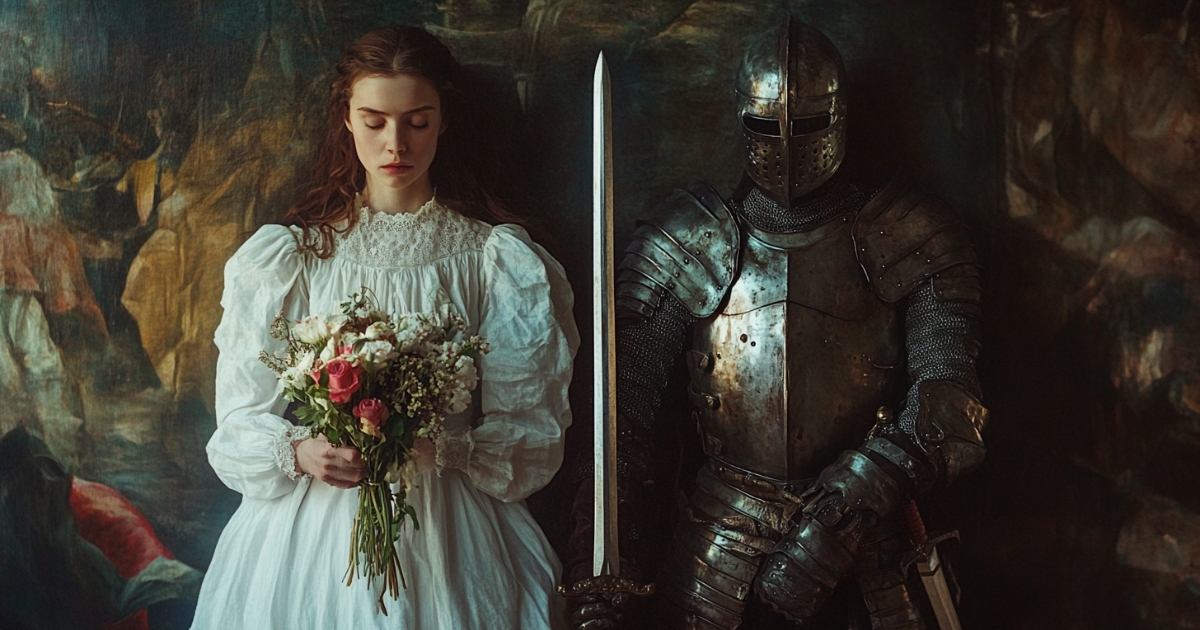In a time of chaos, a young girl bravely stood up. Joan of Arc emerged in 15th century France, amidst the turmoil of the Hundred Years’ War, to save her country. Her name continues to be remembered to this day as a symbol of indomitable courage and unwavering faith. However, within the legend of Joan of Arc, little attention has been paid to the armor she wore. This armor may have held significance beyond mere protection.
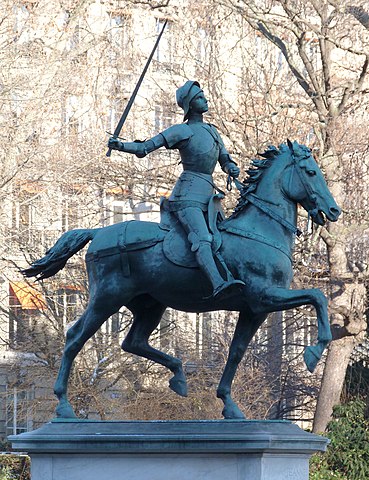
Equestrian statue of Joan of Arc in Place Saint-Augustin, Paris. Her armored figure holding a flag symbolizes her courage and conviction. By Paul Dubois — Siren-Com, CC BY-SA 3.0
This article focuses on the armor worn by Joan of Arc, exploring its characteristics and historical significance. We will examine in detail the armor’s design, materials, and manufacturing techniques, which may have been adapted to fit a woman’s body. We’ll analyze the military technology of the time and the circumstances that led to Joan’s armor gaining symbolic meaning. Furthermore, we’ll consider medieval views on women, military culture, and the influence Joan’s armor had on future military equipment.
Joan of Arc’s Special Armor
Historical records suggest that Joan of Arc wore standard men’s armor. It was extremely rare for women to be on the battlefield at that time, and there are no records of specially made women’s armor. However, if Joan’s armor had been customized to fit her body, it might have been designed to be slimmer and lighter.
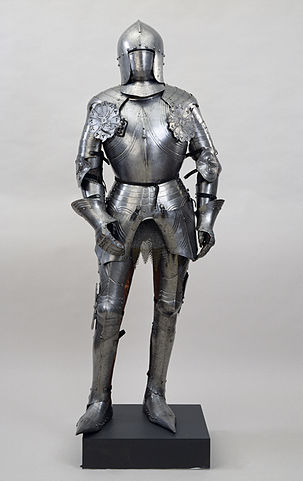
A 15th-century full plate armor. Joan of Arc’s armor would have been similar in design, covering the entire body, but possibly customized to be slimmer and lighter for a female wearer.
The armor was primarily made of iron, but to achieve maximum lightness, it may have incorporated leather and fabric in certain areas. Chain mail was likely used in joint areas for flexibility.
The finest craftsmen of the time are said to have put their full efforts into creating the armor. The precision in crafting each piece and skillfully combining them demonstrates the exceptional technical prowess of the artisans of that era.
It’s also believed that Joan’s armor bore decorations reflecting her faith, such as cross motifs or relief carvings of saints, serving as her spiritual support.
Medieval French Military and Armor: The Reality of the Battlefield
In 15th century battlefields, armor played a role beyond mere protection. It was a status symbol indicating a warrior’s rank and position, and also had a psychological intimidation effect on the enemy.
During Joan of Arc’s time, the French army was exhausted from years of fighting against England. In this context, the appearance of a young girl in shining armor, claiming to hear the voice of God, gave hope to allied soldiers and instilled fear in the enemy.
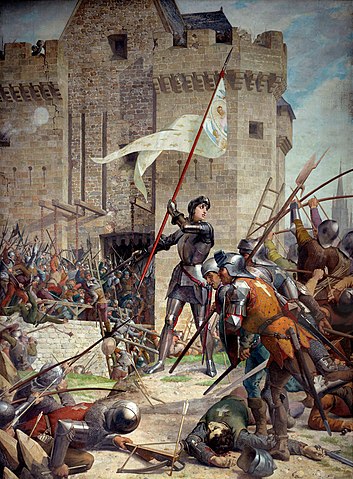
‘Joan of Arc at the Siege of Orléans’ by Jules Eugène Lenepveu (1886-1890). This painting dramatically depicts the battle scene but differs from Joan’s actual attire. Court records indicate that Joan fought in male warrior’s clothing, not plate armor. The flag’s depiction matches court testimony, described as white with fleurs-de-lis and the words ‘Jesus Maria’. By Eugène Lenepveu
Joan of Arc’s armor was unique not just because she was a woman, but because it potentially held special symbolic meaning representing her mission and faith. Some traditions suggest her armor may have been engraved with the French fleur-de-lis, indicating her status as a warrior chosen by God.
The armor of that time was likely designed with features to enhance protection against arrows and early firearms. For instance, the chest plate might have been angled to deflect projectiles more effectively.
However, armor was heavy, and wearing it for long periods would have been exhausting. It also limited vision and hearing, making it difficult to assess the battlefield situation. Joan would have had to overcome these challenges as she fought.
What Joan’s Armor Symbolizes: A Tale of Power and Symbolism
Joan of Arc’s armor held meaning beyond mere protection. It was a symbol of her strength and conviction.
In medieval Europe, armor was closely tied to chivalric ideals. Knights embodied courage, loyalty, and justice by donning armor. Joan’s wearing of armor signified her challenge to the male-dominated knightly society and her claim to equal status.
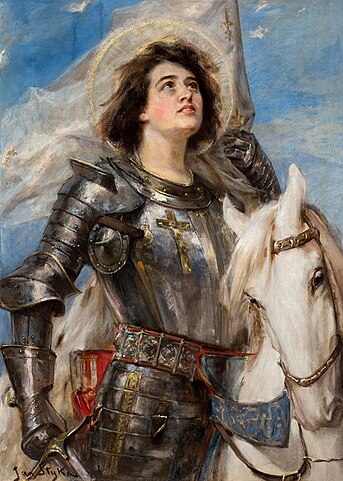
Joan of Arc painted around 1916. She is depicted in armor, holding a flag, symbolically representing her courage and conviction. This painting is a good example of how later artists interpreted and portrayed Joan. By Jan Styka
Joan’s armor also reflected the complex views on women at the time. In medieval society, women were generally kept away from war, expected to play roles in the home or convent. However, Joan was recognized as a special being guided by God’s voice, allowing her to wear armor. This indicated her transcendence of normal social norms.
Furthermore, Joan’s armor symbolically protected her purity. Her virginity was considered sacred at the time, and preserving it was part of her mission. The armor played a crucial role as a symbol of both physical defense and spiritual purity.
The symbolic power of Joan’s armor remained in people’s memories long after her execution. Her armor became a symbol of French independence and freedom, continuing to influence later eras.
Where is Joan of Arc’s Armor Now?
The whereabouts of Joan of Arc’s actual armor remain a mystery. After her execution, the armor disappeared, and no subsequent records exist.
However, replicas of Joan’s armor and similar period armors can be seen in museums worldwide. For example, the Army Museum at Les Invalides in Paris displays 15th-century women’s armor thought to be similar in design to what Joan wore.
The Joan of Arc Museum in Orléans also exhibits various materials related to her life, including armor replicas. These replicas are faithfully recreated based on historical records and contemporary paintings.
Interestingly, numerous legends and folk tales about Joan’s armor exist. For instance, there are rumors that parts of her armor are secretly kept as holy relics, or tales of the armor possessing magical powers. These legends demonstrate how Joan of Arc continues to captivate people’s imaginations.
Historians and archaeologists continue their research to unravel the mystery of the existing armor. Efforts are being made to reveal details about Joan’s armor using the latest scientific technology to analyze the blacksmithing techniques and materials of the time.
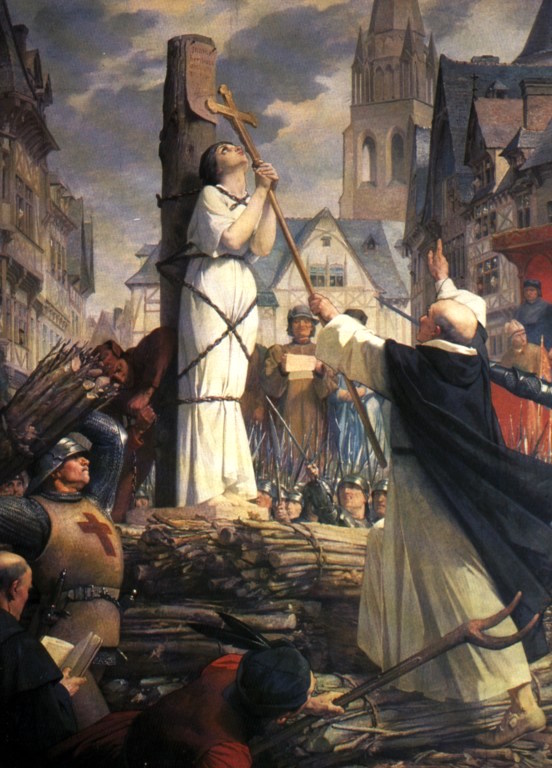
A 15th-century miniature depicting Joan of Arc’s execution. This tragic event marked the end of the story of courage and conviction symbolized by her armor, while simultaneously beginning the legend that would be passed down through generations. By Eugène Lenepveu
Conclusion: Joan of Arc’s Legacy, Armor Connecting History
Even after more than 600 years, Joan of Arc’s armor continues to speak to us. It tells the story of a young girl’s courage and conviction, while also reflecting the society, culture, and technological development of medieval Europe.
The message Joan of Arc’s armor conveys today is about equality beyond gender and status, the power of faith, and the importance of technological innovation. Her armor challenged social norms of the time, showing that women could be warriors too. The armor, linked with faith, became a symbol of spiritual strength. Moreover, the armor, possibly specially designed for her, could be seen as a precursor to technological innovations tailored to individual needs.
Joan’s influence, passed down through time, extends to the development of military technology. The innovations in her armor influenced the development of armor in later eras. For example, the concepts of weight reduction and improved mobility are ideas that apply to the design of modern bulletproof vests.
Joan of Arc’s story has also greatly influenced art and literature. Her image, especially in armor, has been depicted by many painters and sculptors, becoming a symbol expressing her spirituality and strength.
In modern society, Joan of Arc’s armor is also interpreted as a symbol advocating for gender equality and the importance of individual ability. Her story teaches us the importance of staying true to one’s beliefs without being confined by stereotypes.
Finally, Joan of Arc’s armor may be asking us, “What is your armor of the heart?” When facing difficulties, what beliefs and courage do we clothe ourselves in? The story of Joan of Arc’s armor reminds us of the inner strength each of us possesses.
Joan of Arc’s armor serves as a bridge connecting the past, present, and future. Its radiance continues to illuminate our hearts, even after 600 years.
